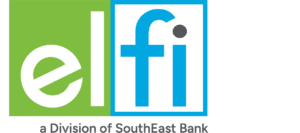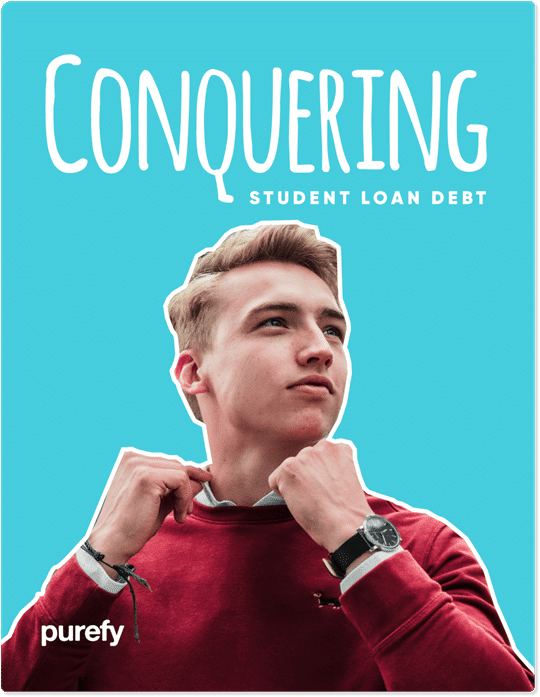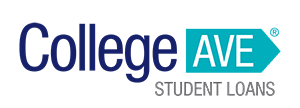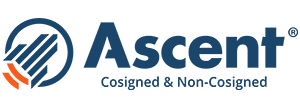Federal student loans come with a lot of benefits, including access to loan forgiveness programs, loan repayment assistance programs and income-driven repayment plans. But is there a federal student loan refinance program?
Unfortunately, no. While the U.S. Department of Education allows borrowers to consolidate their loans and maintain their federal loan status, there’s no refinance program similar to the one offered by private lenders.
Here’s what you need to know about the federal consolidation program and how refinancing your federal loans with a private lender can impact you.
Is there a federal student loan refinance program?
The Direct Loan Consolidation program is a federal program that offers some of the benefits that you can get with refinancing your loans with a private lender, along with some others. However, there are enough distinct differences between the two options that loan consolidation isn’t for everyone.
The Direct Loan Consolidation program combines one or more existing federal student loans into one new loan, either with your initial loan servicer or with a new one. You’re eligible to consolidate your loans once you begin the repayment process on your federal loans.
Unlike with a private refinance loan, federal consolidation doesn’t require a credit check. There are many reasons to consider doing it:
- You want simpler payments: You likely took out multiple student loans throughout your time in college, and it’s possible that you have multiple payments across one or more loan servicers. With consolidation, you can simplify your loan repayment by replacing multiple payments with just one.
- You want access to certain programs: If you qualify for the Public Service Loan Forgiveness program, you may need to consolidate your loans to switch your servicer to FedLoan Servicing, which is currently the only loan servicer that administers the program. Additionally, if you have Parent PLUS Loans, Federal Family Education Loans (FFEL) or Federal Perkins Loans, you can’t get on an income-driven repayment plan unless you consolidate your loans with the Direct Loan Consolidation program.
- Extend your repayment plan: The standard repayment plan for federal student loans is 10 years. But with a Consolidation Loan, you can extend your repayment to up to 30 years, depending on how much debt you have. You can even opt for a graduated repayment plan, which starts off with lower monthly payments and increases them over time.
- Get your loans out of default: If you’ve defaulted on your federal student loans, one of the ways to get them out of default status is to consolidate them. To qualify for this benefit, you need to make three consecutive monthly payments prior to consolidating and agree to get on an income-driven repayment plan with your new loan. Just keep in mind that consolidating a defaulted federal student loan doesn’t remove the default notation from your credit report like rehabilitation does. That said, there are some reasons why you may want to think twice about consolidating your federal student loans. In particular:
- You’ll pay more in interest: One of the main benefits of private student loan refinancing is the ability to lower your interest rate. Unfortunately, that’s not an option with the federal consolidation program. In fact, when you consolidate your loans, your new loan servicer will take the weighted-average interest rate of all the loans you’re consolidating and round that average up to the nearest one-eighth of a percent. That won’t change your total interest charges by a lot unless you’re also extending your repayment term, and it may still be worth it, depending on your reasons. But it’s something to keep in mind as you decide whether it’s the right move.
- You may lose benefits: Depending on the type of loans you have, you may lose certain benefits if you consolidate. For example, Federal Perkins Loans qualify for a special loan forgiveness program if you meet certain requirements. But if you consolidate your Perkins Loans, you’ll no longer be eligible.
- You may lose progress on forgiveness: If you’re working toward federal student loan forgiveness, you may lose progress on your payments if you consolidate because you’re taking on a separate loan.
- It may impact your credit: You don’t have to worry about a credit inquiry when you consolidate, but the process essentially pays off and closes all of your existing loan accounts and creates a new one. Both of these actions can impact your credit score, even if it’s only temporary.
The 2 Best Companies to Refinance Student Loans
Our Top-Rated Picks for 2024 Offer Low Rates and No Fees

How does refinancing student loans actually work?
Private student loan refinancing works similarly to federal student loan consolidation in that you’re paying off your existing student loans with a new one. However, there are some key differences that you’ll want to know before you pursue it:
- You’ll undergo a credit check: Private lenders aren’t backed by the full faith and credit of the U.S. government, so they can’t afford to give out loans to everyone. As a result, you can expect a hard inquiry on one or more of your credit reports when you apply to refinance your student debt. If you’ve established a good credit history, you’ll have a good chance of getting approved. If not, you may need to work on building your credit history or ask a loved one to cosign your application. A minimum credit score in the mid-600s is common, but the higher your score is, the better your chances for approval with favorable terms.
- You need to meet income requirements: In addition to credit requirements, private lenders also require you to meet certain income standards. You’ll typically need to earn at least $24,000 annually to qualify with many lenders, though that minimum can vary. That’s not too high of a bar to clear, but again, it doesn’t guarantee approval, and without a high salary, you may have a hard time getting a low enough interest rate to make the process worth it.
- Interest rates can vary: While the Department of Education standardizes interest rates for all those who qualify for its programs, private lenders typically provide a range of interest rates, of which yours will depend on your creditworthiness. Additionally, they may offer both fixed and variable interest rates. As their names suggest, fixed rates remain the same for the life of the loan, while variable rates can fluctuate with market rates. What’s most important about this difference, though, is that with a good enough credit score and a high enough income, you may be able to secure a lower interest rate than what you’re currently paying.
- Monthly payments are a bit more flexible: With federal student loans, the standard repayment term is 10 years, which you can extend with income-driven repayment plans (20 and 25 years) or Direct Loan Consolidation, which can go as long as 30 years. But there’s nothing shorter than 10 years, and there aren’t really any options between 10 and 20 years. In contrast, private refinance loan repayment terms can range from five to 25 years, with many options in between.
Private student loan lenders vs. federal student loan lenders
Another big difference between federal loan consolidation and private loan refinancing is what you get with your loan servicer or lender.
Federal student loan servicers are notoriously difficult to work with, and many have been sued by federal regulators for violating borrower rights and providing inaccurate information about their options.
This environment may be primarily due to the fact that these private companies have contracts with the federal government and don’t need to necessarily build customer satisfaction because there’s little to no competition — when you first get federal loans, you’re automatically assigned to a loan servicer.
In contrast, private lenders must compete to get and retain your business. This doesn’t mean they don’t have their fair share of complaints and regulatory issues. But you’re much more likely to get a better customer experience with a private lender than with a federal loan servicer.
Additionally, some private lenders offer features that you can’t get with the federal government. That may include a loyalty discount on your interest rate if you already have an account with the lender, interest rate discounts on future loans, career services and more.
If you’ve had a bad experience with your federal loan servicer, it may be worth considering refinancing to improve your experience for the remainder of your repayment process. Just make sure you research potential private lenders and reviews from past and previous customers to get an idea of what you’re getting yourself into.
See How Much You Can Save
Student Loan Payoff Calculator
View Details
Collapse
Check how long it will take you to pay off your student loans. Quickly see the effects of lower rates, extra payments, and different terms on your repayment plan.
Results
| Current Payment | w/ extra payment | Difference | |
|---|---|---|---|
| Term | 10 years | — | — |
| Payoff Date | — | — | |
| Total Interest | $16,560 | — | — |
Want to lower your rate to help pay off student loans faster? Check your rate at our top-rated lenders in 2 minutes, with no impact on credit.
Most important benefits of refinancing federal student loans
There are many advantages to consider when it comes to refinancing your federal student loans. And while it might not be for everyone, here are some of the positives to think about:
- You can save money: If you’re eligible, you could potentially reduce your interest rate, which can lower your monthly payment and also decrease your total interest charges. If you’re on a tight budget or you simply want to maximize your savings, it’s worth pursuing.
- You’ll get more flexibility: If you can afford higher payments and want to eliminate your debt faster, you can go with a repayment period as short as five years with a private lender. On the flip side, if you need a lower monthly payment, you can also extend your term to up to 20 or 25 years, depending on the lender. The important thing is that you can tailor your new repayment plan based on your budget and your goals.
- Your monthly payment will be simpler: As with federal loan consolidation, private loan refinancing will result in just one monthly payment instead of several.
- You can choose your lender: Both federal consolidation and private refinancing allow you to choose your servicer or lender, but with refinancing, your options are generally better because private lenders are more incentivized to provide you with a good customer experience.
Possible pitfalls after refinancing federal loans
Although there are some clear benefits to refinancing your federal student loans, there are also some aspects of the process that make it less appealing for some borrowers. Here’s what to keep in mind:
- Approval isn’t guaranteed: You have to meet a lender’s credit and income guidelines to get approved, or at least have a cosigner who does. Even if you do qualify to refinance, it might not be worth it if you can’t save money with a lower interest rate. In other words, many federal loan borrowers may not even have the opportunity to refinance their loans if they want to.
- You’ll lose access to federal benefits: Private student loans don’t get the same perks as federal student loans. You won’t qualify for federal loan forgiveness or many loan repayment assistance programs operated by government agencies. You also won’t be able to get on an income-driven repayment plan with most lenders, and the forbearance and deferment options aren’t nearly as generous. Finally, private student loans were not included in the student loan payment pause provided by the Coronavirus Aid, Relief and Economic Security Act. If you don’t anticipate needing any of these benefits, it won’t be a problem. But if you think you might need any of those programs at some point, it might be worth it to keep your loans where they are.
- You’ll lose subsidized status: If you have Direct Subsidized Loans, you don’t have to worry about interest accruing during any periods of deferment that you might take in the future. However, if you refinance your loans, that’s no longer on the table.
- It can impact your credit: Whenever you have a hard inquiry on your credit reports, it can impact your credit score — though rate-shopping typically won’t result in multiple inquiries for credit-scoring purposes if you complete the process within 14 to 45 days. Also, as with federal loan consolidation, refinancing results in paying off and closing one or more loan accounts and replacing them with a new one, which can impact your credit score.
- The process is irreversible: Once you refinance your student loans with a private lender, you can’t reverse the process. As a result, it’s imperative that you make sure refinancing is the right decision for you now and in the long run.
Carefully consider all of the pros and cons of refinancing federal student loans to decide if it’s the right fit for you and your future.

Free eBook: How to Conquer Student Loans
Free eBook: How to Conquer Student Loans

Other federal student loan repayment alternatives
Depending on your situation, your needs and your goals, there are several options you can take advantage of to get on the right track with your payments. Here are some details:
- Student loan forgiveness: If you’re a teacher or work for a government agency or eligible nonprofit organization, you may qualify for the Public Service Loan Forgiveness program or the Teacher Loan Forgiveness program. Learn more about these programs to determine if you’re eligible and how they can help you.
- Student loan repayment assistance: If you work in health care, teaching, public service, the military or a number of other fields, you may qualify for student loan repayment assistance through a federal or state agency. Do an internet search to find out more about your options. Also, many private employers offer student loan repayment assistance as an employee benefit, and it’s becoming increasingly popular. So if you’re looking for a new job soon, include that in your criteria for finding the right fit.
- Income-driven repayment: There are four federal income-driven repayment plans, all of which can reduce your monthly payment based on your income. Your payment will be roughly 10% to 20% of your discretionary income, which is calculated based on your income and a percentage of the poverty guidelines for your state of residence and family size. Income-driven repayment plans also extend your repayment term to 20 or 25 years, after which your remaining balance (if any) will be forgiven. The only drawbacks are that you can’t go back to the standard repayment plan once you’ve switched, so payments can increase as your income grows, and you’ll end up being strapped with student loan debt for at least two decades.
- Create your own repayment plan: If you have the budget to make extra payments and you want to pay off your student debt as quickly as possible, consider creating your own plan for an aggressive repayment. For example, you can choose the debt avalanche method, which involves putting extra payments toward your loan with the highest interest rate while paying the minimum on all other loans. Once that loan is paid off, you’ll take what you were paying toward it and apply it to the loan with the next highest interest rate, and so on. You can also take the debt snowball approach, which works the same way, except you focus on the loans with the smallest balances first. Regardless of how you approach paying off your student loan debt, it’s important to take the time to research all of your options and take a proactive approach to eliminate your student debt once and for all.
How to compare the best student loan refinance rates
If you’re certain that you want to refinance your student loans, or you simply want to determine if it’s a good fit for you, it’s important to shop around and compare rate quotes from multiple lenders before you submit an application.
The good news is that student loan refinance companies typically allow you to get prequalified with a rate quote without a hard credit check. This may not be your final rate, but it can give you a good idea of what you might qualify for.
That said, going through the prequalification process and entering the same information over and over with each lender can be time-consuming. One way to get around it is to use Purefy’s rate comparison tool. The process only takes a few minutes, and after you enter all of the required information, you’ll be able to compare rate offers from multiple lenders all at once and side by side.
As you compare those rates, it’s important to remember the differences between variable and fixed interest rates. Variable rates start off lower and look more attractive on paper. But considering that student loan refinance rates have seen record lows in the last year or so, the likelihood that your rate would go up over time is high.
As a result, it’s best to focus on fixed interest rates and be sure that you’re comparing fixed-rate offers to other fixed-rate offers.
You’ll also want to make sure to compare other features beyond the interest rates. Here are some other things that should be on your radar:
- Repayment terms
- Potential fees
- Interest rate discounts
- Cosigner release options, if applicable
- Forbearance and deferment plans
- Other borrower or member benefits
- Customer satisfaction ratings and reviews
This process of comparing student loan refinance rates and other features can take some time, but it’s well worth it to ensure that you can maximize your savings and your overall experience.
The bottom line
If you’re wondering, “Is there a federal student loan refinance program?” The answer is no. While the Direct Loan Consolidation program does come with some benefits, it’s not the same as refinancing, and it can’t help you save money on your student loans.
In contrast, private student loan refinancing can provide you with savings, flexibility and better customer satisfaction. But if you refinance your federal loans, you’ll lose access to key benefits and programs that can provide you with relief. And if you qualify for loan forgiveness or repayment assistance through the Department of Education or another government agency, getting thousands of dollars in relief will surely outweigh any interest savings you might get from refinancing.
That said, if you’re considering student loan refinancing, it’s crucial that you take the time to compare several lenders based on their interest rates, repayment options, customer satisfaction and other features.
Before you decide to refinance, though, take the time to understand all of the alternatives and how they might fit your current situation and your long-term goals. While there’s no one-size-fits-all solution to student loan debt, knowing your situation and your options will give you the information you need to decide what’s best for you.




















